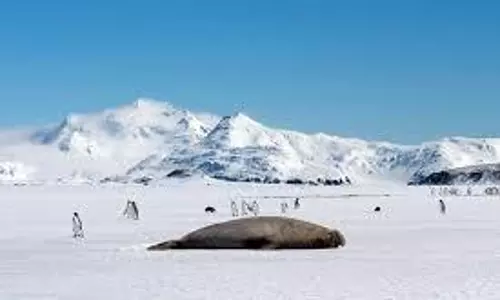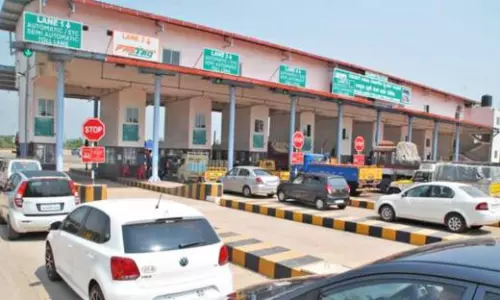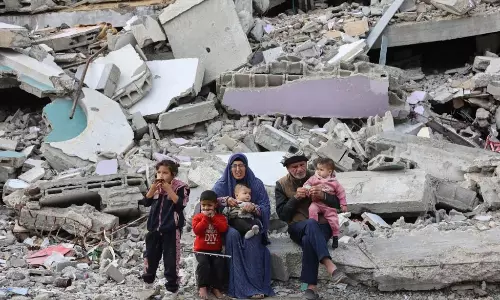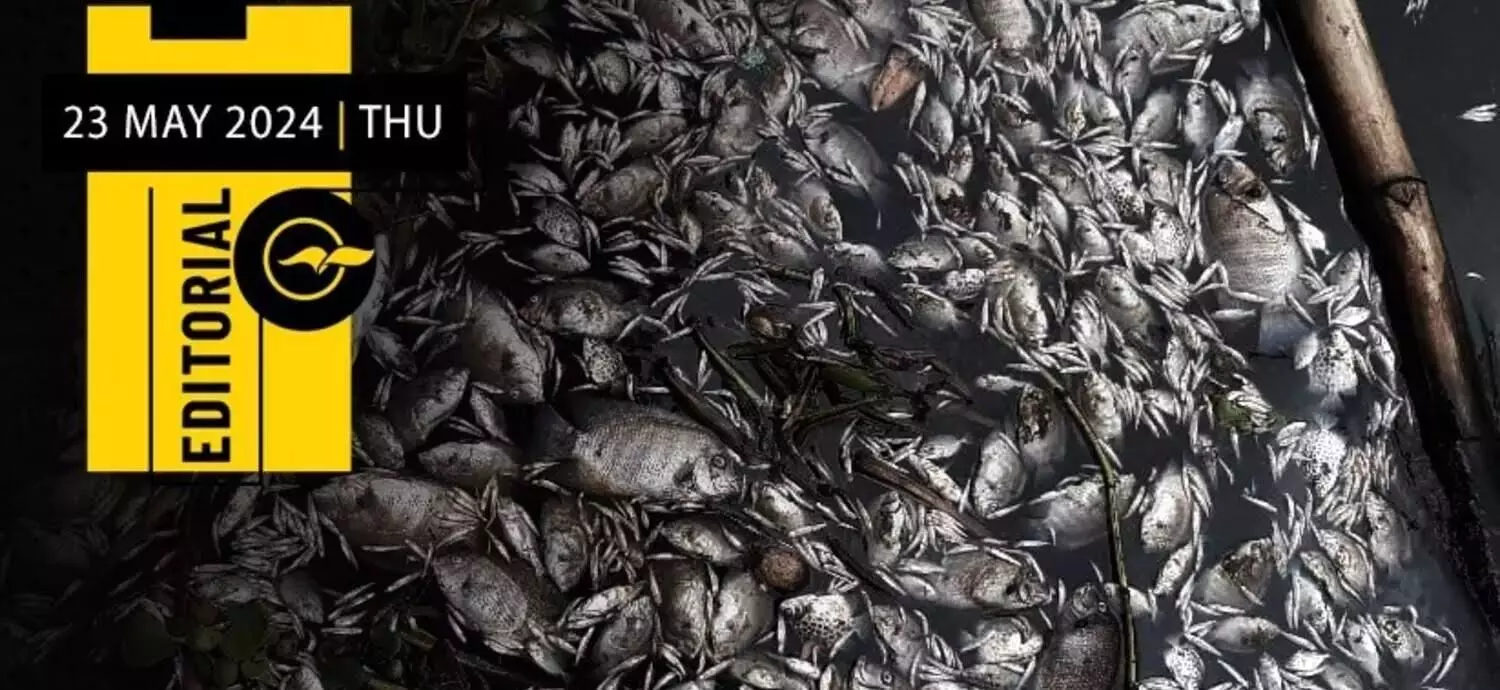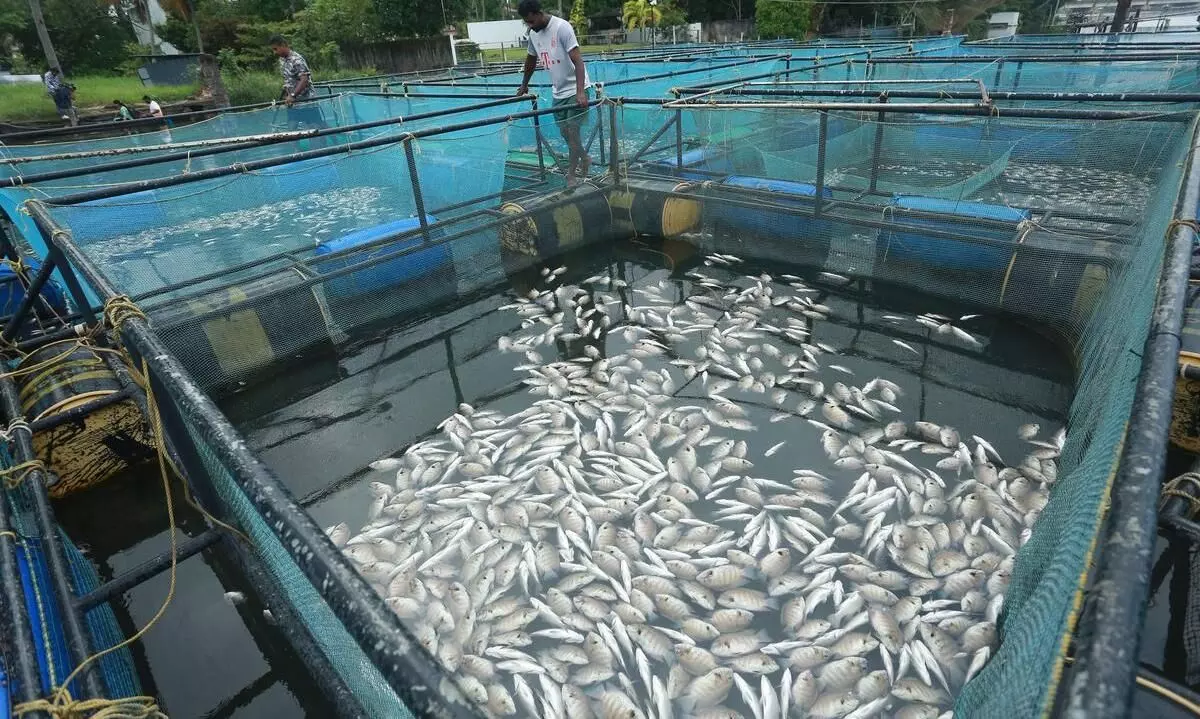
When toxins flow through Periyar once again
text_fieldsYesterday was International Day for Biological Diversity. One purpose of a day such as this is to take a pledge and put it into action to work together to preserve biodiversity and prevent extinction. National leaders, policymakers, scientists, workers, activists, youth and students are working hand in hand to design and implement biodiversity conservation projects around the world. We can also see monopolistic industries that often pose a threat to the survival of species succumbing to pressures created by people, activists and populist governments to take a more responsible stance. However, yesterday was a completely different day for Kerala. Kerala opened its doors on Biodiversity Day with the news that industrial effluents were dumped into the Periyar River, one of the life carriers of the state, killing several species. From big carp, champalli (snapper) , kalaanji (Barramundi) and palangkanni to small fishes have died in large numbers. The change in the colour of the river was seen in the Eloor-Edayar area, the hub of chemical industries on the Periyar coast, from Monday evening. It soon spread to Cheranallur, Varapuzha, Kadamakkudy and Mulavukad areas. The fish came up from the bottom of the river, unable to breathe in the poisonous current. An unpleasant smell was also reported on the banks of the river.
Kerala University of Fisheries and Ocean Research (KUFOS) officials pointed out that the gradual increase in the presence of sulfur dioxide, nitrogen dioxide and carbon dioxide in the water and the lack of pH value and oxygen has led to this situation and the mass death of fishes. This toxic flood and associated damage in Periyar is not a recent phenomenon. All the effluents from the factories in the industrial sector are let out into this river, which is the livelihood of hundreds of fishing families, while lakhs of people in Kerala's metro city of Kochi and its surrounding areas depend on this river for their drinking water. During holidays and the rainy season, toxic water is discharged into the river uncontrollably. On June 11, 1998, a terrible fish disaster occurred due to the spread of industrial waste in an eight-kilometre stretch of Periyar. Workers from towns like Varapuzha and Kadamakudy, known for their marine wealth and fishing expertise, have been compelled to leave this employment and seek other means of sustenance due to this frequent poisoning and the resultant loss of fish and starvation. Many people left their homes when respiratory diseases, lung diseases and cancer became a threat. Local residents have been organizing protests and legal battles for more than two decades against this practice, which is exposing generations to deadly diseases and decimating the agricultural sector. As a result of the efforts of the people's movements, a verdict was obtained from the National Green Tribunal on 27th May 2022 that no sewage from factories or even treated sewage should be discharged into Periyar. The tribunal ordered that this be implemented within one year. However, even after two years of the Tribunal's order, the government and the State Pollution Control Board, which has been entrusted with the task of curbing pollution, are destined to see the country shamefully colluding with the merchants of death, and the recent fish poaching is just a small proof.
Apart from the traditional fishermen in the region, newcomers have ventured into fish farming to overcome the worsening unemployment and severe economic crisis after demonetisation and the Covid pandemic. They have borrowed lakhs of rupees to set up aquaculture and shrimp farms. They are making a fair demand for compensation. One of the experienced fish farmers told the media that due to this toxic water spread, fish will not come to this area for another year. If that happens, hundreds of people will be thrown out of work, and fish shortages will cause a sharp rise in prices. The government should move quickly to ensure not just that farmers are appropriately compensated, but also that locals can live without fear of death, and that the industries that dump these waste are held accountable. This is a state with ministers and bureaucrats who flew to the Netherlands and other European countries to study post-flood reconstruction and urban beautification. Were they all unaware of the steps being taken to safeguard the rivers or were they hesitant to put what they learned into practice? Kerala is now experiencing the effect of protecting the interests of the factory capitalists more than protecting the river, the species and the lives of the people. It would do well for everyone to bear in mind that actions that would destroy the river for short-term benefits will ultimately lead to the complete destruction of both the river and the nation.






